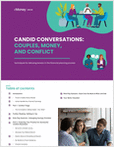About 9% of U.S. adults with annual incomes between $60,000 and $99,999 may have been underinsured in 2007.
Researchers at the Commonwealth Fund, New York, have included that figure in a paper analyzing trends in the percentage of U.S. adults who appear to be underinsured.
The paper appears in the online edition of Health Affairs, a health finance academic journal.
The researchers who wrote the paper defined the term “underinsured” to include individuals who have paid 10% or more of their income for out-of-pocket medical expenses; low-income individuals who have spent more than 5% of their income on medical expenses; and individuals with health insurance deductibles that equal or exceed 5% of income.
The overall rate of underinsurance for U.S. adults ages 18 to 64 increased to 25% in 2007, from 16% in 2004, the researchers report.
The underinsured rate was 26% in 2007 for adults in the age range studied with incomes under $20,000 per year.
The underinsured rate was 13% for adults in the $40,000-$59,999 income category.








 June 10, 2008 at 01:53 PM
June 10, 2008 at 01:53 PM










